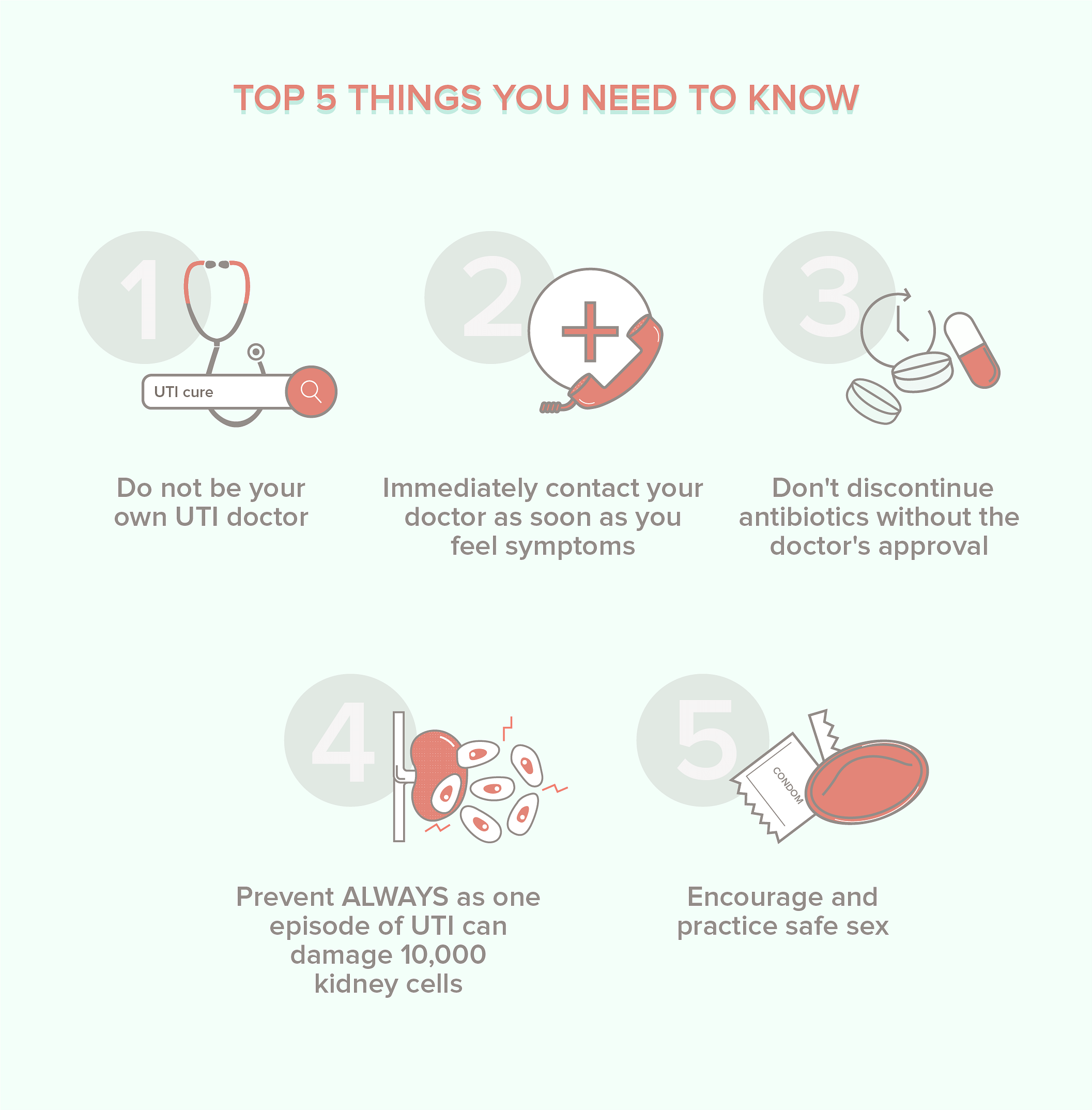Urinary tract infections (UTIs) are very common and at least 1 in 2 women will get UTI in her lifetime. There are 3 types of UTIs. To understand them, however, let us look at some of the basics first. The kidneys control the amount of water in the blood and filter out waste products to form urine. Each kidney has a tube called a ureter, which joins the kidney to the bladder. The urine leaves the kidneys through the ureters and enters the bladder. The bladder ‘signals’ the urge to urinate and urine leaves the body through a tube called the urethra. UTIs usually occur in the kidney or the bladder.
Types of UTI
There are 3 types of UTI depending on which part of the urinary tract is infected.
● Urethritis
This type of UTI is caused by infection in the urethra and can be classified into 2 categories:
1. Gonococcal Urethritis (sexually transmitted)
2. Non-Gonococcal Urethritis
The symptoms for Urethritis can include itching or irritation at the end of the urethra (where the urine comes out). It can make urination difficult and can also result in vaginal discharge. There can be many factors that contribute to Urethritis. Microorganisms entering the urethra travel up the kidney and cause the infection. Gonococcal Urethritis is commonly caused by sexual transmission while Non-Gonococcal Urethritis, which is of fungal origin, is the case of unclean hygiene.
● Cystitis
An infection of the bladder, Cystitis causes pain in the lower belly and burning during urination. Although there is an urge to urinate often, the urination can occur in small amounts. The urine generally appears to be cloudy, pink or red, and smells bad.
● Pyelonephritis
Pyelonephritis is an infection in the kidney that causes pain just below the rib cage and above the waist on one or both sides of the back. It can cause fever and nausea. Like Cystitis, it is also characterized by a burning sensation during urinating and foul odour.
UTI Prevention Methods
UTIs can be prevented in many ways:
- Empty your bladder as soon as you feel the need to urinate. Don’t rush, and be sure that you’ve emptied the bladder completely.
- Wipe from front to back after you use the toilet and before sex.
- Pee forcefully after sex to flush out any bacteria that may have entered your urethra.
- Drink lots of water.
- Choose showers over baths.
- Stay away from feminine hygiene sprays, scented douches and bath products; they will only increase irritation.
- Keep your genital area dry by wearing cotton underwear and loose-fitting clothes. Tight jeans and nylon underwear can trap moisture, creating the perfect environment for bacteria growth.
- If you use a diaphragm, non-lubricated condoms, or spermicidal jelly for birth control, switch to another method. Diaphragms increase bacteria growth, while unlubricated condoms and spermicides can irritate the urinary tract and worsen UTI symptoms.
- Avoid unprotected intercourse, even if you are on contraception. Always use a barrier method to prevent infection.
When it comes to UTIs we can do our bit to avoid it from happening. These 5 tips will help you prevent it rather than curing it.

We often receive questions about UTI from our community members. To provide you with authentic information, we have consulted several experts about UTI, causes, symptoms, and methods of prevention. You can read more here.



